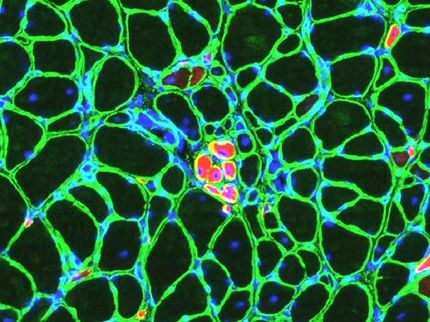Laminopathies: Key components in the disease mechanism identified
Laminopathies are hereditary diseases that affect mainly the muscle tissue. These diseases include for example Emery-Dreifuss muscular dystrophy, dilated cardiomyopathy, limb-girdle muscular dystrophy and Hutchison-Gilford progeria syndrome.
The underlying defect in these diseases is mutation in the genes encoding lamins or lamin-associated proteins. For example, many mutations in the lamin gene LMNA have been associated with different diseases.
Lamins are crucial components of the nuclear lamina that underlies the inner side of nuclear envelope, and provides mechanical stability to the nucleus. Lamina also participates in many different nuclear processes.
Two theories exist, why mutations in the lamina components cause disease. According to the first theory, mutations cause changes in the nuclear structure, which can lead to cell death in tissues that undergo harsh mechanical strain, such as the muscle. The second theory postulates that disturbed lamina causes changes in the gene expression patterns that are then deleterious for the cell.
A collaborative study between American and Finnish scientists bridge these two theories. The study shows that abnormal structure of the nuclear lamina, caused by laminopathy mutations, lead to changes in gene expression by disturbing the function of a specific transcription regulating protein.
The researchers found out that in laminopathy cells, the regulation of SRF (serum response factor), which controls the expression of many important genes, is disturbed. The molecular basis for this is that LMNA mutations that cause laminopathy alter the cellular localization of emerin, which is an important constituent of the nuclear envelope. Emerin regulates actin in the cell nucleus, and actin in turn is a critical regulator of SRF activator MKL1. Therefore, mis-localized emerin in laminopathies results in reduced activation of SRF by MKL1, and reduced expression of SRF target genes. Because many SRF target genes are critical for muscle function, this finding explains, why laminopathies affect mainly this tissue type. It also gives a mechanistic link between altered nuclear envelope structure and gene expression.
This study will give a glimmer of hope to the patients suffering from laminopathies, by identifying key components that underlie the disease mechanism. Restoring MKL1 activity in laminopathies might be a productive intervention mechanism for these devastating diseases.
Most read news
Topics
Organizations

Get the life science industry in your inbox
By submitting this form you agree that LUMITOS AG will send you the newsletter(s) selected above by email. Your data will not be passed on to third parties. Your data will be stored and processed in accordance with our data protection regulations. LUMITOS may contact you by email for the purpose of advertising or market and opinion surveys. You can revoke your consent at any time without giving reasons to LUMITOS AG, Ernst-Augustin-Str. 2, 12489 Berlin, Germany or by e-mail at revoke@lumitos.com with effect for the future. In addition, each email contains a link to unsubscribe from the corresponding newsletter.






















































